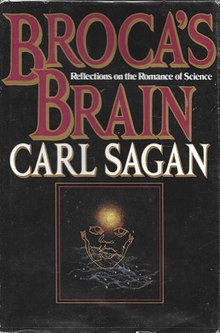
Carl Edward Sagan was an American astronomer and science communicator. His best known scientific contribution is his research on the possibility of extraterrestrial life, including experimental demonstration of the production of amino acids from basic chemicals by exposure to light. He assembled the first physical messages sent into space, the Pioneer plaque and the Voyager Golden Record, which were universal messages that could potentially be understood by any extraterrestrial intelligence that might find them. He argued in favor of the hypothesis, which has since been accepted, that the high surface temperatures of Venus are the result of the greenhouse effect.

Broca's area, or the Broca area, is a region in the frontal lobe of the dominant hemisphere, usually the left, of the brain with functions linked to speech production.

World Brain is a collection of essays and addresses by the English science fiction pioneer, social reformer, evolutionary biologist and historian H. G. Wells, dating from the period of 1936–1938. Throughout the book, Wells describes his vision of the World Brain: a new, free, synthetic, authoritative, permanent "World Encyclopaedia" that could help world citizens make the best use of universal information resources and make the best contribution to world peace.

Pierre Paul Broca was a French physician, anatomist and anthropologist. He is best known for his research on Broca's area, a region of the frontal lobe that is named after him. Broca's area is involved with language. His work revealed that the brains of patients with aphasia contained lesions in a particular part of the cortex, in the left frontal region. This was the first anatomical proof of localization of brain function.

Ancient astronauts refer to a pseudoscientific set of beliefs which holds that intelligent extraterrestrial beings visited Earth and made contact with humans in antiquity and prehistoric times. Proponents suggest that this contact influenced the development of modern cultures, technologies, religions, and human biology. A common position is that deities from most, if not all, religions are extraterrestrial in origin, and that advanced technologies brought to Earth by ancient astronauts were interpreted as evidence of divine status by early humans.

The Demon-Haunted World: Science as a Candle in the Dark is a 1995 book by the astrophysicist Carl Sagan and co-authored by Ann Druyan, in which the authors aim to explain the scientific method to laypeople and to encourage people to learn critical and skeptical thinking. They explain methods to help distinguish between ideas that are considered valid science and those that can be considered pseudoscience. Sagan states that when new ideas are offered for consideration, they should be tested by means of skeptical thinking and should stand up to rigorous questioning.
Possible Worlds is a play written in 1990 by John Mighton. The author, Mighton, is a mathematician and philosopher. His plays tend to meld science, drama and math into one cohesive piece. It is part murder mystery, part science-fiction, and part mathematical philosophy and follows the multiple parallel lives of the main character George Barber. Mighton, a mathematician from University of Toronto's Fields Institute, brought his considerable professional experience to bear on the writing of the play.
In philosophy of science and philosophy of mind, cognitive closure is the proposition that human minds are constitutionally incapable of solving certain perennial philosophical problems. Owen Flanagan calls this position anti-constructive naturalism or the "new mysterianism" and the primary advocate of the hypothesis, Colin McGinn, calls it transcendental naturalism acknowledging the possibility that solutions may be knowable to an intelligent non-human of some kind. According to McGinn, such philosophical questions include the mind-body problem, identity of the self, foundations of meaning, free will, and knowledge, both a priori and empirical.
The philosophy of artificial intelligence is a branch of the philosophy of mind and the philosophy of computer science that explores artificial intelligence and its implications for knowledge and understanding of intelligence, ethics, consciousness, epistemology, and free will. Furthermore, the technology is concerned with the creation of artificial animals or artificial people so the discipline is of considerable interest to philosophers. These factors contributed to the emergence of the philosophy of artificial intelligence.
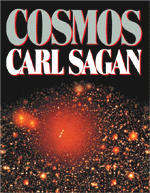
Cosmos is a popular science book written by astronomer and Pulitzer Prize-winning author Carl Sagan. It was published in 1980 as a companion piece to the PBS mini-series Cosmos: A Personal Voyage with which it was co-developed and intended to complement. Each of the book's 13 illustrated chapters corresponds to one of the 13 episodes of the television series. Just a few of the ideas explored in Cosmos include the history and mutual development of science and civilization, the nature of the Universe, human and robotic space exploration, the inner workings of the cell and the DNA that controls it, and the dangers and future implications of nuclear war. One of Sagan's main purposes for both the book and the television series was to explain complex scientific ideas in a way that anyone interested in learning can understand. Sagan also believed the television was one of the greatest teaching tools ever invented, so he wished to capitalize on his chance to educate the world. Spurred in part by the popularity of the TV series, Cosmos spent 50 weeks on the Publishers Weekly best-sellers list and 70 weeks on the New York Times Best Seller list to become the best-selling science book ever published at the time. In 1981, it received the Hugo Award for Best Non-Fiction Book. The unprecedented success of Cosmos ushered in a dramatic increase in visibility for science-themed literature. The success of the book also served to jumpstart Sagan's literary career. The sequel to Cosmos is Pale Blue Dot: A Vision of the Human Future in Space (1994).

Worlds in Collision is a book by Immanuel Velikovsky published in 1950. The book postulates that around the 15th century BC, the planet Venus was ejected from Jupiter as a comet or comet-like object and passed near Earth. The object allegedly changed Earth's orbit and axis, causing innumerable catastrophes that are mentioned in early mythologies and religions from around the world. The book has been heavily criticized as a work of pseudoscience and catastrophism, and many of its claims are completely rejected by the established scientific community as they are not supported by any available evidence.
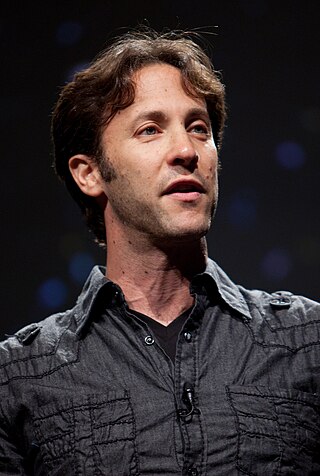
David Eagleman is an American neuroscientist, author, and science communicator. He teaches neuroscience at Stanford University and is CEO and co-founder of Neosensory, a company that develops devices for sensory substitution. He also directs the non-profit Center for Science and Law, which seeks to align the legal system with modern neuroscience and is Chief Science Officer and co-founder of BrainCheck, a digital cognitive health platform used in medical practices and health systems. He is known for his work on brain plasticity, time perception, synesthesia, and neurolaw.
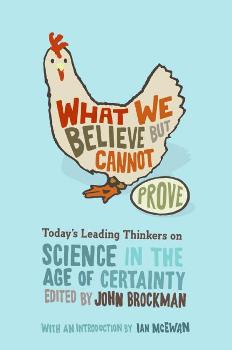
What We Believe But Cannot Prove: Today's Leading Thinkers on Science in the Age of Certainty is a non-fiction book published by Harper Perennial and edited by literary agent John Brockman that includes an introduction by novelist Ian McEwan. The book consists of various responses to a question posed by the Edge Foundation, with answers as short as one sentence and as long as a few pages. Among the 107 published contributors are scientists and philosophers such as Richard Dawkins, Daniel C. Dennett, Jared Diamond, Rebecca Goldstein, Steven Pinker, Sir Martin Rees, and Craig Venter; as well as convicted sex offender Jeffrey Epstein. Some contributions weren't published, including those by Benoit Mandelbrot and computer scientist John McCarthy. However, their contributions are among 120 responses available online.
Jon Lomberg is an American space artist and science journalist. He was Carl Sagan's principal artistic collaborator for more than twenty years on many projects from 1972 through 1996. In 1998, the International Astronomical Union officially named an asteroid in recognition of his achievements in science communication. He was NASA's Design Director for the Golden Record on the Voyager spacecraft; the cover he designed is expected to last at least a billion years.
The argument from reason is a transcendental argument against metaphysical naturalism and for the existence of God. The best-known defender of the argument is C. S. Lewis. Lewis first defended the argument at length in his 1947 book, Miracles: A Preliminary Study. In the second edition of Miracles (1960), Lewis substantially revised and expanded the argument.
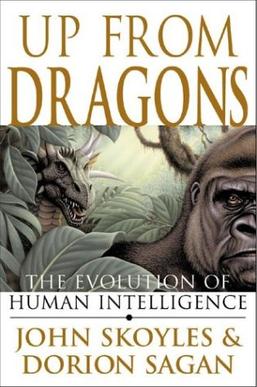
Up from Dragons: The Evolution of Human Intelligence is a 2002 book on human evolution, the human brain, and the origins of human cognition by John Skoyles and Dorion Sagan. The book considers how the brain and genes evolved into their present condition over the course of thousands and millions of years. It was published by McGraw Hill.
Sex and Repression in Savage Society is a 1927 book by anthropologist Bronisław Malinowski. It is considered "a famous critique of psychoanalysis, arguing that the 'Oedipus complex' described by Freud is not universal." Malinowski gives a partial explanation of the role of sex in social organization through the synthesis of psychoanalysis and anthropology, considered competing academic disciplines at the time. The book is considered an important contribution to psychoanalysis, which Malinowski acknowledged was a "popular craze of the day."
I have never been in any sense a follower of psycho-analytic practice, or an adherent of psycho-analytic theory; and now, while impatient of the exorbitant claims of psycho-analysis, of its chaotic arguments and tangled terminology, I must yet acknowledge a deep sense of indebtedness to it for stimulation as well for valuable instruction in some aspects of human psychology.

The Beginning of Infinity: Explanations that Transform the World is a popular science book by the physicist David Deutsch first published in 2011.
Daniel T. Willingham is a psychologist at the University of Virginia, where he is a professor in the Department of Psychology. Willingham's research focuses on the application of findings from cognitive psychology and neuroscience to K–12 education.
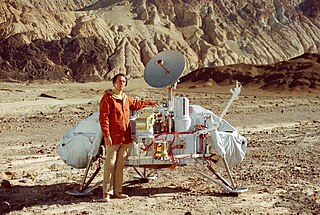
The Sagan standard is the aphorism that "extraordinary claims require extraordinary evidence". It is named for science communicator Carl Sagan, who used the phrase in his 1979 book Broca's Brain and the 1980 television program Cosmos. The standard has been described as fundamental to the scientific method and is regarded as encapsulating the basic principles of scientific skepticism.
